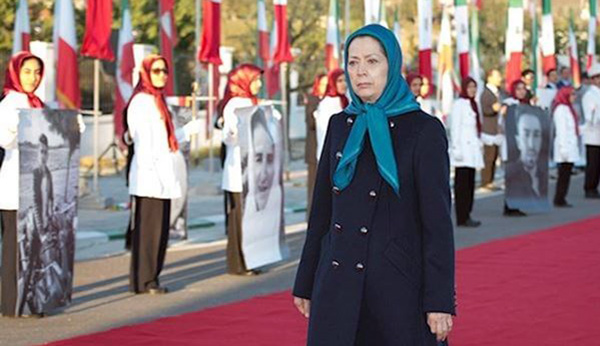Following the announcement of the ceasefire between Iran and Israel, Maryam Rajavi, the surviving leader of Mujahedin-e Khalq (MEK), called the ceasefire “a step forward for the third option.”
According to her own claim, Maryam Rajavi has been proposing the “third option” since 2006. She reiterated this claim last week in a hall she had rented at the European Parliament with some people in attendance.
What is the third option?
The third option, according to the MEK, is the only option for confronting the Iranian government. The other two options are what the MEK refers to as “appeasement and foreign military attack.” Maryam Rajavi says that appeasement –negotiations with the Islamic Republic– has only served to strengthen Tehran and develop its nuclear program. The MEK also claims that they do not support foreign military intervention. They say war is not the answer to the “Iran problem.”
According to Maryam Rajavi, the MEK’s third option involves “democratic” change by Iranian “people” and the “resistance”. The term “resistance” refers to the MEK and its political front, National Council of Resistance of Iran (NCRI).
Presenting the third option confronts Maryam Rajavi with at least one fundamental question: How can the “Iranian Resistance” guarantee that this option is democratic?
MEK Seeking Legitimacy
The MEK has never been seen as the legitimate resistance of the Iranian people. This is because they lack credibility and trust in the eyes of Iranians. The contradictions in their strategies and actions contribute to their discrediting, and as a result, they not only lose their legitimacy but also appear hypocritical. Therefore, it is difficult for the MEK to gain the support of Iranians and the international community and to convince them of the effectiveness of their ideas.
The little support the MEK receives among Western politicians seems to be based on the concept of “the enemy of my enemy is my friend.” The reality is that they provide the “right” answers for politicians seeking to justify their radical, violent policy against Tehran.
The MEK’s violent past and terrorist attacks undermine their claim of legitimacy based on their past struggles, and their reluctance to respond to criticism exacerbates this. They have never responded to criticisms for their collaboration with Saddam Hussein and killing their own compatriots in terrorist attacks. The MEK leaders are generally seen as short-sighted and despotic.
Legitimacy or charisma of the Rajavis?
Maryam’s charisma, especially in the international community, is effective to a certain extent. She presents herself as a representative of peace, freedom, and democracy. An appearance that would not seem typical for the leader of a terrorist group. However, the special and unattainable position that both she and Massoud have in the organization completely undermines their claim to be democratically elected, and thus reinforces the fact that the MEK is a cult of personality.
Although the MEK’s political institutions have some international momentum, they lack credibility. The so-called National Council of Resistance was supposed to be run on democratic principles, but the leadership—Maryam Rajavi as the president of the council—has far more power than all the council members. The structure of the council is absolutely authoritarian.
The MEK cannot prove its democratic intentions simply by declaring them through words. They must prove that the principles they claim to uphold apply to them as well, but to date they have failed to prove this.
The obvious failure of the third option
The MEK ideology has failed to gain popular support. Their radical actions, both at the organizational and external relations levels, prevent political reform, and as a result, they lose potential supporters rather than reaching a wider audience.
Their totalitarianism, which bases their arguments and actions on black and white, completely right or completely wrong, completely good or completely bad, contributes to their political isolation.
The contradictions in the MEK’s words and actions have led to their failure to gain legitimacy. They continue to struggle for recognition. Despite more than forty years of talking about the imminent overthrow of the Iranian government, their future remains uncertain and complex.
The Problem with the third option
The third option is problematic. It is presented as an answer to the “Iran problem,” but it raises more questions than it answers. The third option promises a lot, but it is difficult to understand how to implement it and how to reconcile it with reality.
Contrary to the severe and complex problems that the MEK claims Iran is facing, their solution is oversimplified and seems impossible to achieve. They give black and white ultimatums. They are caught up in good or bad, right or wrong thinking. In the real world, nothing is “either or.” The world has many shades of gray.
When Maryam Rajavi promises to realize her dream for a future Iran through third option, she is denying reality. The “Iranian resistance” is not real. The MEK’s legitimacy in the Iranian public is not real. The Mujahedin-e Khalq (MEK) has failed to gain legitimacy, and consequently the third option proposed by Maryam Rajavi is meaningless.
Mazda Parsi


